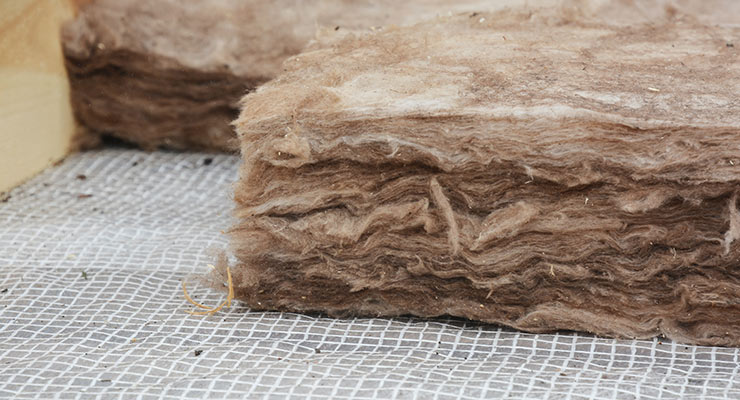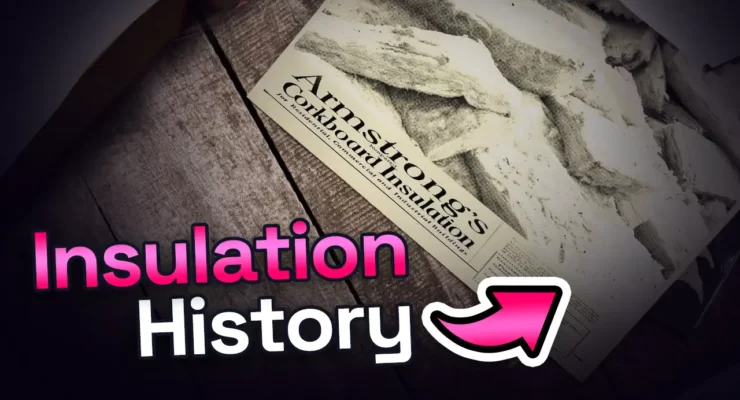Fast read
The history of insulation traces back thousands of years, evolving alongside human ingenuity. Ancient Egyptians used mud bricks for cool homes, while Romans insulated pipes with cork. Innovations have shaped our search for comfort. The Industrial Revolution saw the rise of asbestos before modern advancements focused on energy efficiency and sustainability.
Today, double-glazed windows and high-performance thermal insulation contribute to comfortable living spaces while reducing energy consumption. As we strive for a sustainable future, innovations in insulation continue to play a vital role in creating efficient and comfortable environments for generations to come.
What is the history of insulation?
Throughout history, humans have always wanted to stay warm when it’s cold outside. This led to the invention of insulation techniques, a story that spans thousands of years and shows how clever humans can be. So what exactly is the history of insulation and where did it all start?
Early on, people figured out ways to stay warm in caves and then built homes with thick mud bricks to stay cool in the hot sun and warm at night. The ancient Greeks even made walls with air pockets to trap warm air inside. Later, the Romans used cork to keep hot water pipes warm and protect workers from burns. During the Industrial Revolution, asbestos became popular for insulation, but it was later banned because it was harmful to health.
Today, we focus on making homes more energy-efficient and environmentally friendly. We use materials like double-glazed windows and special insulation in walls and attics to keep homes cosy while using less heat energy. With governments promoting energy-efficient homes, there’s even more innovation happening in insulation. As we look to the future, we can expect even better ways to keep our homes warm and comfy while being kind to the planet.
Early Innovations: From Ancient Egypt to Greece
The history of insulation began in prehistoric times when people recognised the need for insulation. The earliest dwellings, like caves, provided natural protection from the elements. As humans transitioned to building their own shelters, they began incorporating rudimentary insulation methods.
Ancient Egyptians used thick mud bricks to build structures and protect themselves from the hot desert sun. These mud dwellings remained cool during the day and provided warmth during the cooler nights.
Across the Mediterranean, the ancient Greeks were among the first to implement air gaps as an insulation technique. This involved constructing walls with intentional air pockets, allowing trapped air to act as a natural insulator. While this method might seem simple, it demonstrates an early understanding of heat transfer and retention principles.

The Romans and Beyond: Embracing New Materials and Techniques
The next step in the history of insulation was by the Romans, known for their engineering prowess, who were innovative in their approach to insulation. They developed a novel method for insulating hot water pipes by coating them with cork. This not only prevented heat loss but also protected workers from burns. This innovation marked a crucial step towards more sophisticated insulation techniques.
The Industrial Revolution witnessed a surge in the use of steam power, leading to an increased demand for insulated pipes. This period saw the widespread adoption of asbestos, a naturally occurring mineral known for its heat resistance. Originally seen as groundbreaking, it was used until the mid-20th century. However, worries about health risks caused it to be banned.
Modern Insulation: A Focus on Efficiency and Sustainability
The 20th and 21st centuries have witnessed a significant shift in insulation materials and techniques. Today’s homes have double-glazed windows, wall insulation, and loft insulation to make them more energy-efficient and comfortable.
Recent years have seen a growing concern about environmental sustainability, leading to government initiatives promoting energy-efficient homes. This has further fueled the development of cutting-edge insulation materials and techniques. Modern constructions are often built with high-performance insulation, making them airtight and drastically reducing thermal energy consumption.
The history of insulation shows how we’ve improved from simple to advanced materials and methods, aiming for comfort and resource efficiency. As we look towards the future, further innovations in insulation can play a crucial role in creating sustainable and comfortable living spaces for generations to come.
The History of Insulation Overall
In conclusion, the history of insulation shows how humans have always sought ways to stay cosy and efficient. From ancient times to now, we’ve come up with clever ways to keep warm and cool. While the past saw innovations like mud bricks in Egypt and air gaps in Greece, later on, the Romans used cork to insulate pipes.
In modern times, we’ve focused on making homes more energy-efficient and eco-friendly with materials like double-glazed windows and high-performance insulation. Looking ahead, we’ll keep improving, ensuring comfy homes that are kinder to the planet for future generations.
